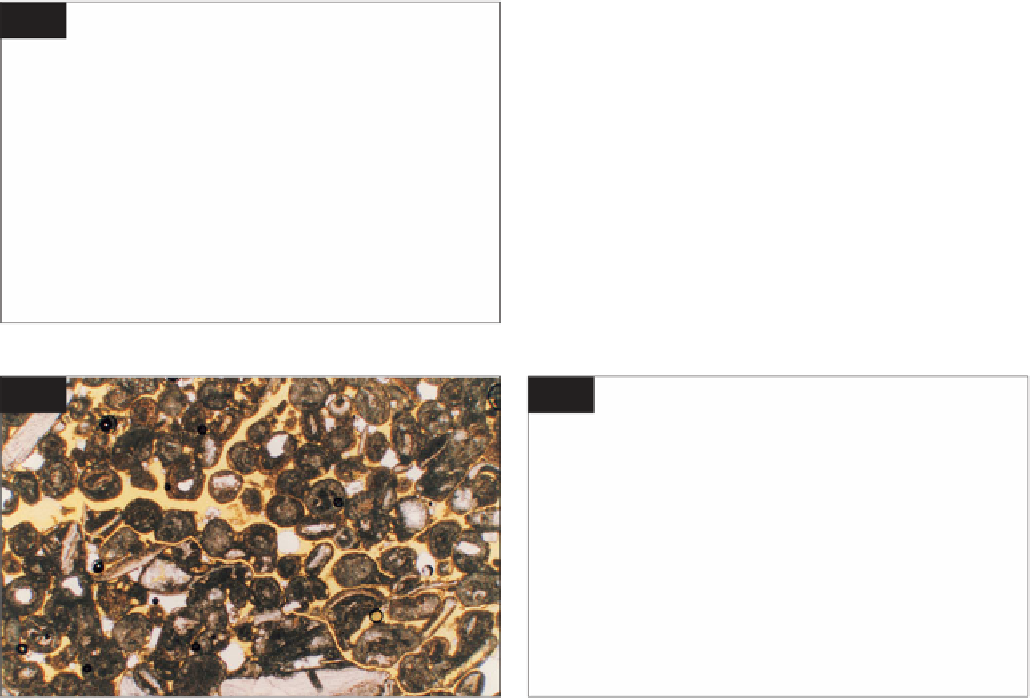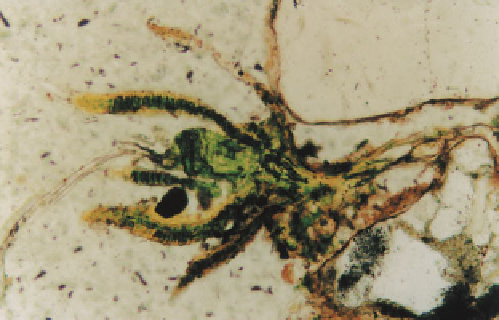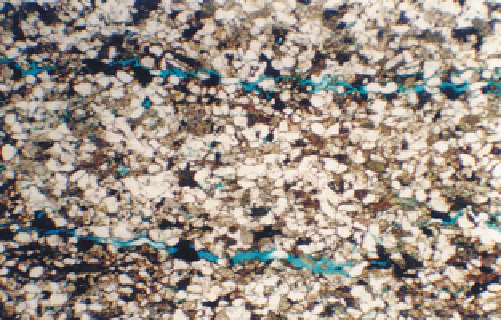Geoscience Reference
In-Depth Information
On areas of buildings that can remain wet, frost action
can cause cracking and surface scaling (
91, 92
). The pore
structure of stone plays an important part in determining
its resistance to frost, with impermeable and free-
draining stones being more durable. Polarizing and
fluorescence microscopy are used to determine the pore
structure and crack patterns of stones with a view to
determining the degree of damage attributable to freeze-
thaw mechanisms and prediction of future performance
(Ingham, 2005b).
Certain organisms that colonize masonry have the
potential to cause biodeterioration. Trees, creepers, and
mosses (
93
) cause physical damage from their roots,
while certain bacteria, fungi, and lichen deposit corrosive
organic acids. Optical microscopy is a powerful tool for
assessing bioreceptivity and biodeterioration of colonized
building stone, allowing assessment of biofilm
characteristics in relation to their substrate. Successful
applications include locating and evaluating
biologically-induced physicochemical changes, such as
rhizoid-induced microcracking, lichen-induced pitting or
perforating, and bacterially triggered acid leaching
(Dreesen
et al
., 1999).
A problem particular to certain marbles is nonreversible
expansion caused by thermal cycling. For thin cladding
panels this can cause bowing or warping of the panels on
buildings, which could potentially lead to panel/fixing
failure. The problem seems to be closely related to the
91
91
Frost damage of a sandstone window sill with
cracks (blue) running along the bedding planes; PPT,
×35.
92
93
92
Freeze-thaw damage of 'Portland Whitbed'
limestone with fine cracks (yellow) running around
ooliths and breaking the bonds between them; PPT,
×35.
93
Moss colonizing a 100-year-old masonry surface;
PPT, ×300.






